Convection Bake or Roast: Which Setting to Use?
Convection bake and convection roast represent two essential cooking methods that home chefs should understand.
Hot air circulates around food, creating that perfect golden exterior everyone loves.
Each method works differently depending on what delicious meal sits in your oven.
Most modern kitchen appliances offer both options at the touch of a button.
The primary differences involve heat distribution and fan operation throughout the cooking process.
Traditional ovens simply cannot match the even browning that convection systems provide.
Anyone who values efficiency while preparing family dinners will appreciate mastering these specialized settings.
The next sections break down exactly when to use each method for spectacular results every time.
What is Convection Bake?
Convection bake is a cooking method that uses a fan and an exhaust system inside the oven to circulate hot air evenly around the food. This consistent airflow helps maintain a uniform temperature, allowing dishes to cook faster and more evenly compared to traditional baking.
Convection baking is ideal for roasting meats, baking cookies, and cooking multiple trays at once, as it promotes even browning and crispiness.
Because of the efficient heat distribution, recipes often require lowering the temperature or shortening the cooking time when using convection bake.
Advantages
Convection roast cooks food evenly and caramelizes it beautifully, making it ideal for achieving crispy skin on meats. It also cooks relatively quickly, though not as fast as convection bake.
Disadvantages
Since convection roast doesn’t maintain a steady temperature, food can burn on the outside while staying undercooked inside. Cooking times are longer than convection bake, and the fan noise may bother those sensitive to sound.
Convection Roast: A Simple Guide
Convection roast works by using both bake and broil elements, with a fan that pushes hot air in specific directions. The system allows for higher temperature settings, which cuts down cooking time significantly.
Heat comes from alternating between these elements rather than running them simultaneously. This smart approach helps control how fat melts in meats like pork or beef without drying them out.
The directed airflow makes sure all parts of your food receive even heat treatment, so you can say goodbye to those partially undercooked spots that sometimes happen with traditional roasting methods.
Understanding the Difference: Convection Bake vs Roast
Detailed information about these two settings awaits you below. The comparison table gives a clear breakdown that helps normal users understand both modes.
| Feature | Convection Bake | Convection Roast |
| Heat Source | Uses heating elements on both top and bottom for even heat distribution. | Uses broil element with a fan to circulate heat evenly inside the oven. |
| Heating Elements | Heat comes from both top and bottom heating elements. | Heat comes from the broil element; fan circulates hot air. |
| Temperature | Lower cooking temperature, around 375°F (varies with food). Ideal temps: 330°F for chicken, 325-350°F for cookies, 375°F for potatoes. | Higher temperature, usually about 400°F to brown foods. |
| Cooking Duration | Faster cooking time due to direct heat; cookies take 10-12 mins; chicken 15 mins to 1 hr 40 mins; potatoes about 40-45 mins. | Longer cooking time; beef or pork 15 mins to 1 hr 40 mins; lamb 1 hr 30 mins; vegetables 40-55 mins. |
| Cooking Result | Produces evenly cooked food with consistent texture and color. | Yields caramelized, browned exterior with tender, juicy interior. |
| Suitable Foods | Best for dough-based foods like cookies, bread, cakes; also good for crispy chicken wings and baked potatoes. | Ideal for roasting large meat portions (pork, lamb, beef) and vegetables with crispy skin and tender inside. |
Heat Source
Convection bake works by using top and bottom heating elements together, creating a steady temperature that cooks food evenly from inside out. This method really shines when making cakes and bread, giving them that perfect rise and texture.
On the other hand, convection roast relies on the broil element to warm the air while a fan moves this heat around the oven cavity. The clever design keeps temperatures consistent during the entire cooking time.
As a bonus, this setting combines both still and moving air to give your dishes that mouthwatering brown finish that makes everyone at the table ask for seconds.
Heating Elements
Heat patterns in your oven make all the difference when cooking food perfectly. During convection bake, the bottom elements work to cook food thoroughly while giving it that nice base heat.
On the other hand, convection roast brings together heat from both upper and lower elements for more complete coverage. Meanwhile, convection roast takes a different approach by generating heat from the broil element, with the fan helping to move that hot air throughout the entire oven space.
These distinct cooking methods let you choose the perfect setting for whatever delicious meal you're preparing tonight.
Temperature
Convection roast settings operate at higher temperatures, typically around 400 degrees F, which helps food develop that appealing brown exterior. Convection bake, in contrast, works at milder temperatures of about 375 degrees F for gentler cooking.
When preparing beef rib or boneless cuts with convection bake, 305 degrees F works perfectly, while beef tenderloin needs higher heat at 405 degrees F. Pork requires similar temperatures to beef for optimal results.
Lamb dishes cook best at 325 degrees F, and vegetables roast beautifully at 385 degrees F. Chicken comes out juicy and tender at 330 degrees F in convection bake mode.
Cookie lovers should set their ovens between 325-335 degrees F for perfect batches. Potatoes need slightly more heat at 375 degrees F to achieve that crispy outside and fluffy inside that everyone loves.
Cooking Duration
Convection bake cooks faster than convection roast since it uses direct heat rather than relying on fan-distributed warmth that needs more time to balance internal temperatures. Many dishes work well with these settings at different speeds.
Cookies take only 10-12 minutes in convection bake mode, making them one of the quickest options available. Chicken cooking times vary by cut, typically ranging from 15 minutes to 1 hour 40 minutes when using this function.
Potatoes usually need about 40-45 minutes to bake perfectly. For meats like beef or pork in convection roast mode, cooking times also span from 15 minutes to 1 hour 40 minutes depending on which cuts you're preparing.
Lamb generally requires around 1 hour 30 minutes, while most vegetables become tender and flavorful after 40-55 minutes of cooking time.
Cooking Result
Food from convection bake settings turns out perfectly even in both texture and color, making each bite just right. Meanwhile, dishes cooked with convection roast develop a gorgeous caramelized exterior while staying wonderfully tender inside.
The difference between these two methods creates unique results that can make your meals stand out in different ways, depending on what you're trying to achieve on your dinner plate.
Suitable Foods
Convection bake settings deliver ideal heat for dough-based foods like cookies, bread and cakes, perfectly melting butter to create fluffy, flaky textures in your baked goods. For those wanting to prepare larger meat portions such as pork, lamb or beef, the convection roast setting works wonders by circulating hot air that renders fat and creates crispier skin while maintaining tender, juicy meat inside.
This same setting works beautifully with vegetables too, giving them a nicely browned, caramelized exterior while preserving a moist, soft interior. Root vegetables and greens like carrots and broccoli maintain their satisfying crunch even after roasting in your convection oven.
When You Should Use Convection Bake?
Convection bake is ideal when you want even cooking and consistent results, especially with baked goods like cookies, bread, and cakes. The balanced heat from both the top and bottom elements ensures that dough-based foods cook thoroughly without burning.
It’s also great for dishes like baked potatoes and crispy chicken wings where a steady, moderate temperature is key to achieving a perfect texture and color. Use convection bake when you want a reliable, gentle cooking environment that prevents over-browning and cooks food evenly inside and out.
When You Should Use Convection Roast?
Convection roast is best when you want to achieve a beautifully browned, caramelized exterior with a tender, juicy interior, especially for larger cuts of meat like pork, lamb, and beef.
The higher temperature and hot circulating air help render fat and crisp the skin while locking in moisture.
It’s also perfect for roasting vegetables, giving them a flavorful, caramelized surface while keeping them soft and moist inside.
Use convection roast when you want your food to develop a rich color and complex flavors through roasting at higher heat with air circulation.
Master Techniques When Using Convection Bake and Convection Roast:
Each mode brings special qualities to consider when mastering your device. Let me show you the ins and outs of operating it effectively.
How to Use Convection Bake
Start by choosing foods suited for convection baking and season them as desired. Place the oven rack in the middle or just below the center for even heat distribution.
Preheat the oven about 25°F lower than the recipe temperature (e.g., preheat to 350°F if the recipe calls for 375°F). After preheating for 10–15 minutes, place your food on the middle rack to avoid burning from the bottom heat.
Since convection cooks faster, reduce the cooking time slightly and begin checking your food when about 75% of the time has passed, then every 10 minutes until done.
How to Use Convection Roast
Use a large pan or tray with a rack for roasting meat or turkey. Place smaller items or vegetables like zucchini on the highest rack for a crispy exterior, while larger meats like whole turkeys should go on the bottom rack for better heat absorption.
Adjust the temperature carefully to ensure thick meats cook through without drying out. About 20–30 minutes before the end, add vegetables or sides to roast alongside.
Once done, remove with oven mitts and let the meat rest briefly before serving for juicy, tender results.
Recipes for Convection Baking
Popular dishes become simple when made with convection bake, no fancy skills needed. Check out these recipes for more details.
Eggless Buttery Indian Cookies
Indian nan khatai biscuits make a perfect family treat without eggs, letting toasted nuts shine as the star flavor. These crunchy delights release an amazing nutty aroma with each bite, creating a taste experience that's hard to resist.
The smart blend of chickpea flour with warm cardamom powder satisfies anyone's sweet cravings while keeping the texture just right - not too hard, not too soft. Many home bakers love how these traditional cookies balance sweetness with nutty richness, making them ideal for afternoon tea or casual snacking.
Kids and adults alike reach for these special treats whenever they appear on the table.
Crunchy Seasoned Baked Potato
Making these potato wedges is super easy with your convection bake setting - perfect for dinner or when late-night hunger strikes. Just slice your potatoes, coat them with olive oil for that extra crunch, then add paprika and garlic powder which give them an amazing smell and taste.
The whole dish comes together quickly, creating something truly mouthwatering. Dip these crunchy, salty wedges in sour cream or sweet chili sauce for an absolute treat that satisfies all your cravings without any fuss.
Crispy Baked Chicken Wings
Perfectly baked chicken wings are just a recipe away, with their crunchy exterior and juicy, tender meat inside. These tasty treats become irresistible once they come out of your convection oven, giving you that ideal texture contrast everyone loves.
The wonderful smell of rosemary enhances the flavor experience, while a touch of garlic powder adds that extra savory kick to each bite.
Convection Roast Ideas to Try
By using the convection roast setting on your oven, these everyday ingredients transform into something extraordinary. Many simple recipes can help you create tasty dishes that everyone at the table will love.
Salt-And-Pepper Beef Roast
Beef remains a favorite meat option for countless food lovers worldwide. Making a delicious beef roast doesn't require much effort at all.
Simply season your cut with salt, pepper, and sugar before placing it in the convection oven. Once done, the outside becomes perfectly caramelized while the inside stays wonderfully moist.
This cooking method ensures each bite is tender, juicy and full of flavor when served on your plate.
Roasted Sweet Potato And Apple Casserole
Roasted sweet potato and apple casserole makes a nutritious addition to any meal without much fuss in the kitchen. The process starts with roasting and peeling sweet potatoes before layering them with fresh apple chunks, then topping everything off with crispy bread crumbs.
Despite its straightforward appearance, this dish delivers an impressive mix of flavors - from the savory base to the slight tang from the apples. Sweet potatoes turn wonderfully tender during cooking, while the apple pieces maintain their pleasant crunch and contribute a refreshing tartness.
Convection Oven-Roasted Turkey
Turkey holds a special place at Thanksgiving and Christmas tables across the country. Now you can make a delicious roasted turkey at home with your convection roast setting.
Simply mix salt, butter, and poultry seasoning, then rub it on the turkey before letting the oven do its magic. Golden brown skin serves as a clear indicator that your turkey is perfectly cooked.
Despite the thickness of the meat, convection ensures even cooking throughout the bird. Each bite offers buttery flavors and tender texture that everyone will love.
Got Questions? We’ve Got Solutions
1. When should I use convection bake instead of convection roast?
Use convection bake for baked goods like cookies, cakes, and breads where gentle, even heating is important. Choose convection roast for meats and vegetables when you want a crispy exterior while keeping the inside juicy.
2. Do I need to adjust cooking temperatures when using convection settings?
Yes, typically reduce the recipe temperature by 25°F when using any convection setting. The fan circulates hot air more efficiently, cooking food faster than conventional ovens at the same temperature.
3. Can I use the same pans for both convection bake and roast?
For convection bake, light-colored, low-sided pans work best to allow maximum air circulation. For convection roast, use pans with low sides or a roasting rack to elevate the food, allowing air to circulate underneath.
4. Will foods cook faster with convection settings?
Yes, both settings cook 25-30% faster than conventional ovens. Always check food earlier than the recipe suggests and use a food thermometer to ensure proper doneness.
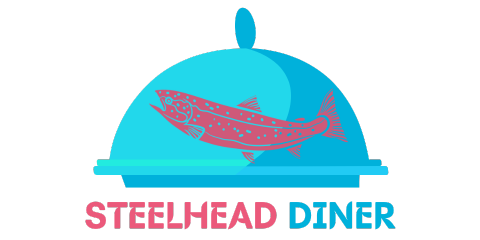
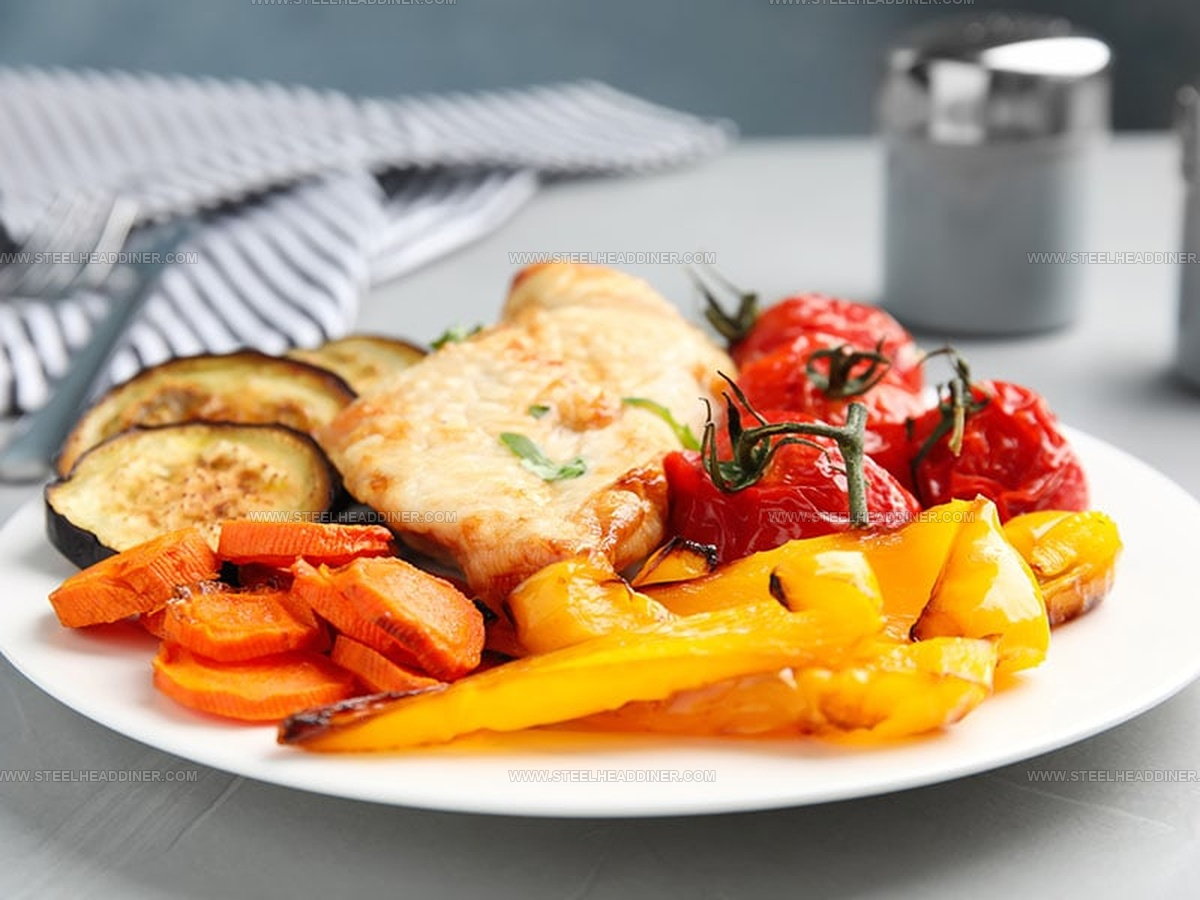
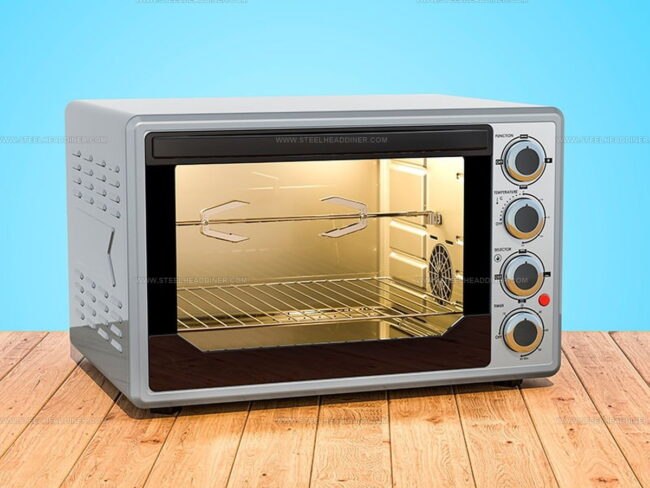
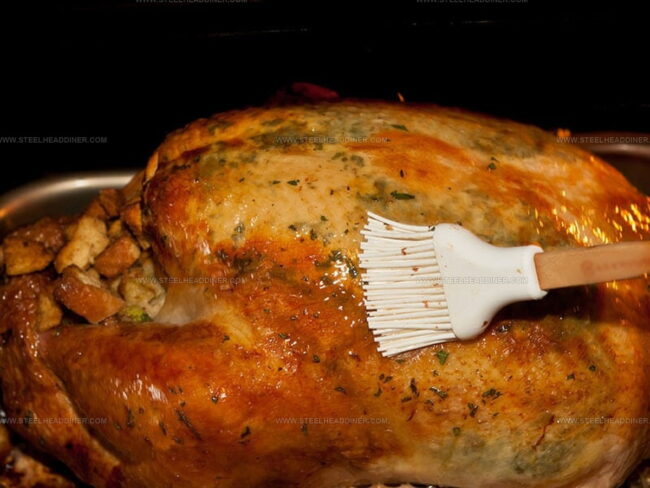
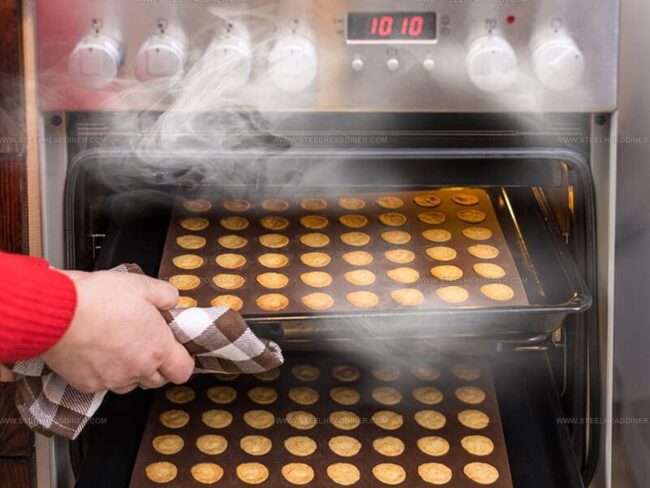
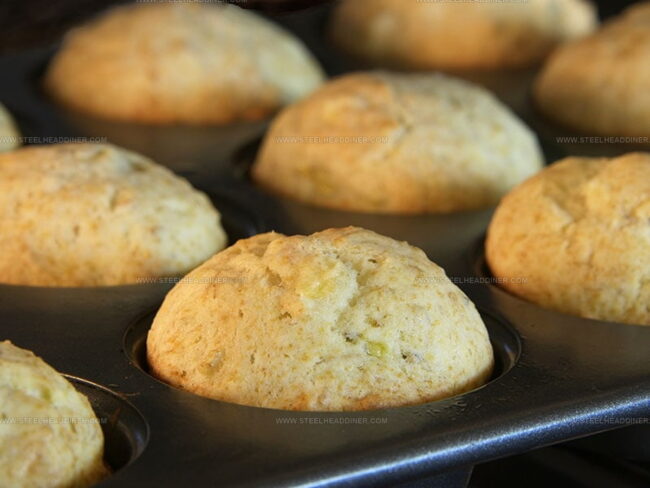
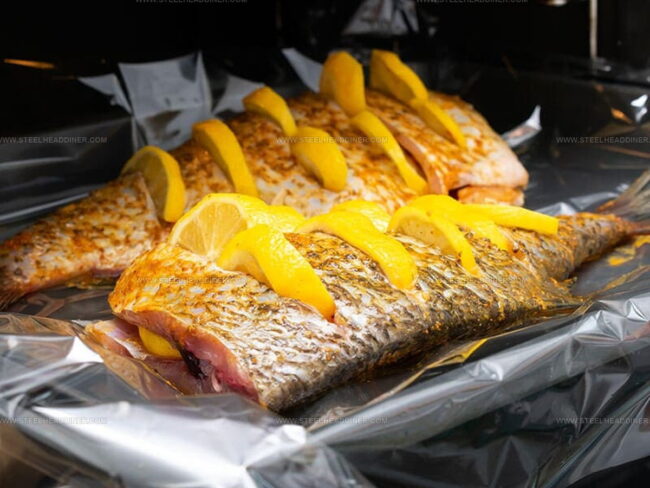
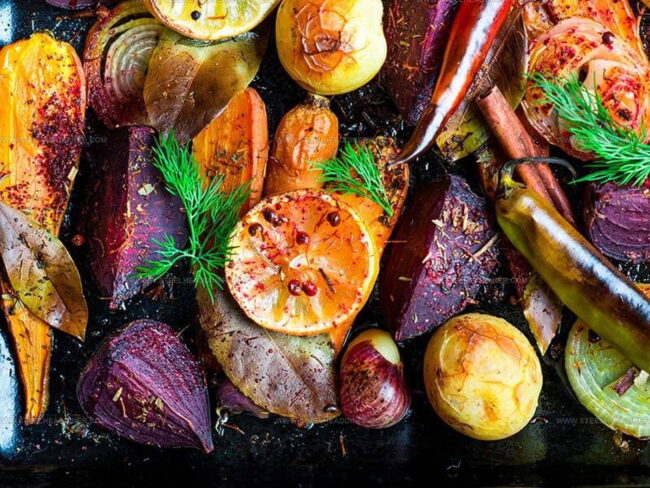
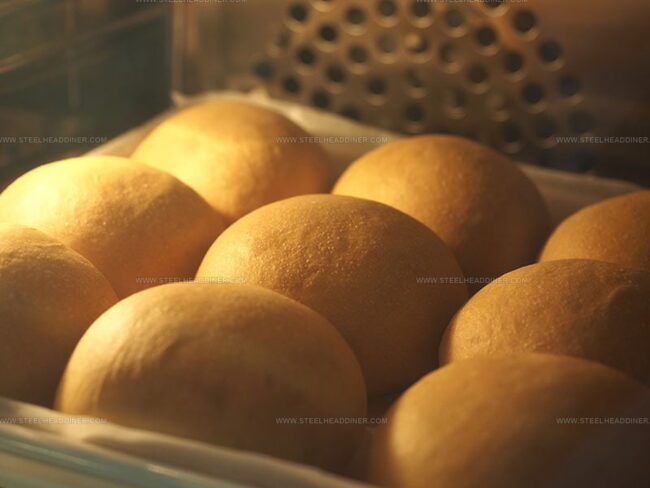
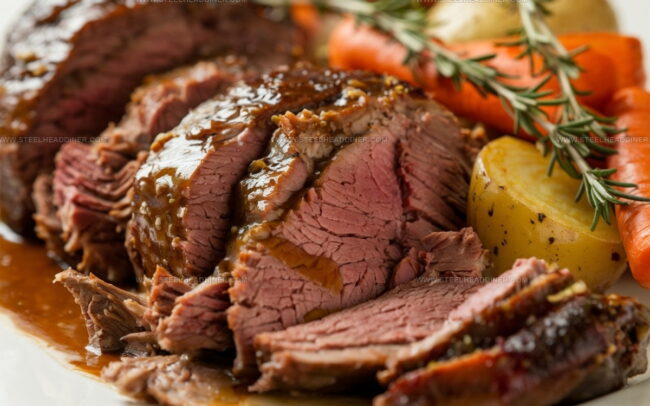
Maya Thompson
Culinary Content Creator & Nutrition Enthusiast
Expertise
Healthy single-serving recipes, Meal prepping for individuals, Integrating nutrition into everyday cooking, Vegetarian and plant-based cuisine
Education
The Chef’s Academy at Harrison College
Associate of Applied Science in Culinary Arts
Focus: Nutrition, meal planning, and culinary techniques for healthy living.
Maya found her passion in the kitchen by mixing good food with good energy. After earning her culinary degree at The Chef’s Academy at Harrison College, she made it her mission to keep cooking simple, wholesome, and packed with flavor.
At Steelhead Diner, Maya shares easy, healthy recipes built for real life. For Maya, great food seems like a celebration of everyday moments, made better one fresh bite at a time.